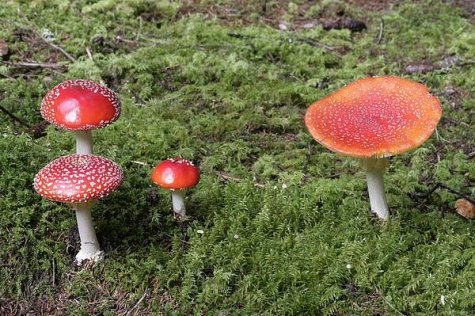Colourful views
Photo: Arne Ader
Translation: Liis
Fly agaric
|
Fly agaric, red fly agaric |
Punane kärbseseen
|
Amanita muscaria |
Fourteen different species of Amanita mushrooms grow in the Estonian forests. The deadly poisonous destroying angel and death cap have already been described, with due warnings.
The toxins of the blusher (Amanita rubescens), the grisette (Amanita vaginata), the grey spotted Amanita (Amanita excelsa or A. spissa), the warted Amanita (Amanita strobiliformis) and the orange grisette (Amanita crocea) decompose on parboiling, but despite that the recommendaton is to let all the Amanita species stay in the forest, to be enjoyed by sight.
All other Agaric species remain toxic even after parboiling! .
At the moment the forest floor is brimming with the most typical Amanita - the red fly agaric, one of the most common of gill fungi and probably the best known and recognised mushroom species in the world. Habitats are all kinds of forests; it grows in groups, sometimes forming dense clumps and fairy rings. In early autumn the view is sometimes quite enchanting ...
Much has been written about the fly agaric and its effects. Peeter Laurits has presented an interesting lecture:
(in Estonian; presented at the international festival "Nocturnus" held in PAdise Manor on Sept 6-9, 2001)









